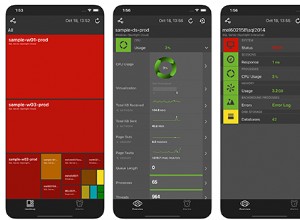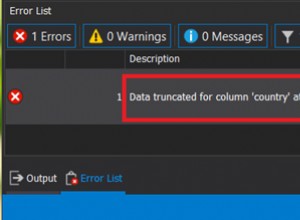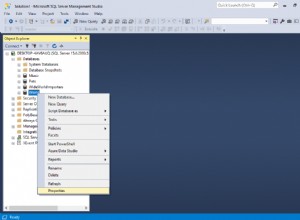Vous n'avez pas spécifié RDBMS, si vous connaissez le nombre de colonnes à transformer, vous pouvez coder les valeurs en dur :
select FileId,
max(case when property = 'Name' then value end) Name,
max(case when property = 'Size' then value end) Size,
max(case when property = 'Type' then value end) Type
from yourtable
group by FileId
Il s'agit essentiellement d'un PIVOT fonction, certains RDBMS auront un PIVOT , si vous le faites, vous pouvez utiliser ce qui suit, PIVOT est disponible dans SQL Server, Oracle :
select *
from
(
select FileId, Property, Value
from yourTable
) x
pivot
(
max(value)
for property in ([Name], [Size], [Type])
) p
Si vous avez un nombre inconnu de colonnes à transformer, vous pouvez utiliser un PIVOT dynamique . Cela obtient la liste des colonnes à transformer au moment de l'exécution :
DECLARE @cols AS NVARCHAR(MAX),
@query AS NVARCHAR(MAX)
select @cols = STUFF((SELECT distinct ',' + QUOTENAME(property)
from yourtable
FOR XML PATH(''), TYPE
).value('.', 'NVARCHAR(MAX)')
,1,1,'')
set @query = 'SELECT ' + @cols + ' from
(
select FileId, Property, Value
from yourtable
) x
pivot
(
max(value)
for Property in (' + @cols + ')
) p '
execute(@query)




